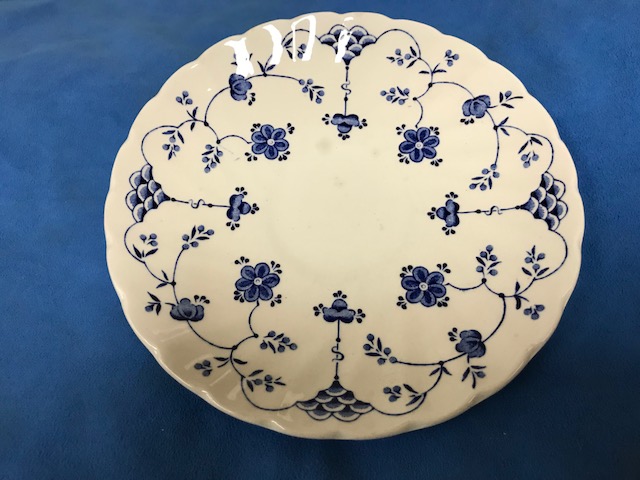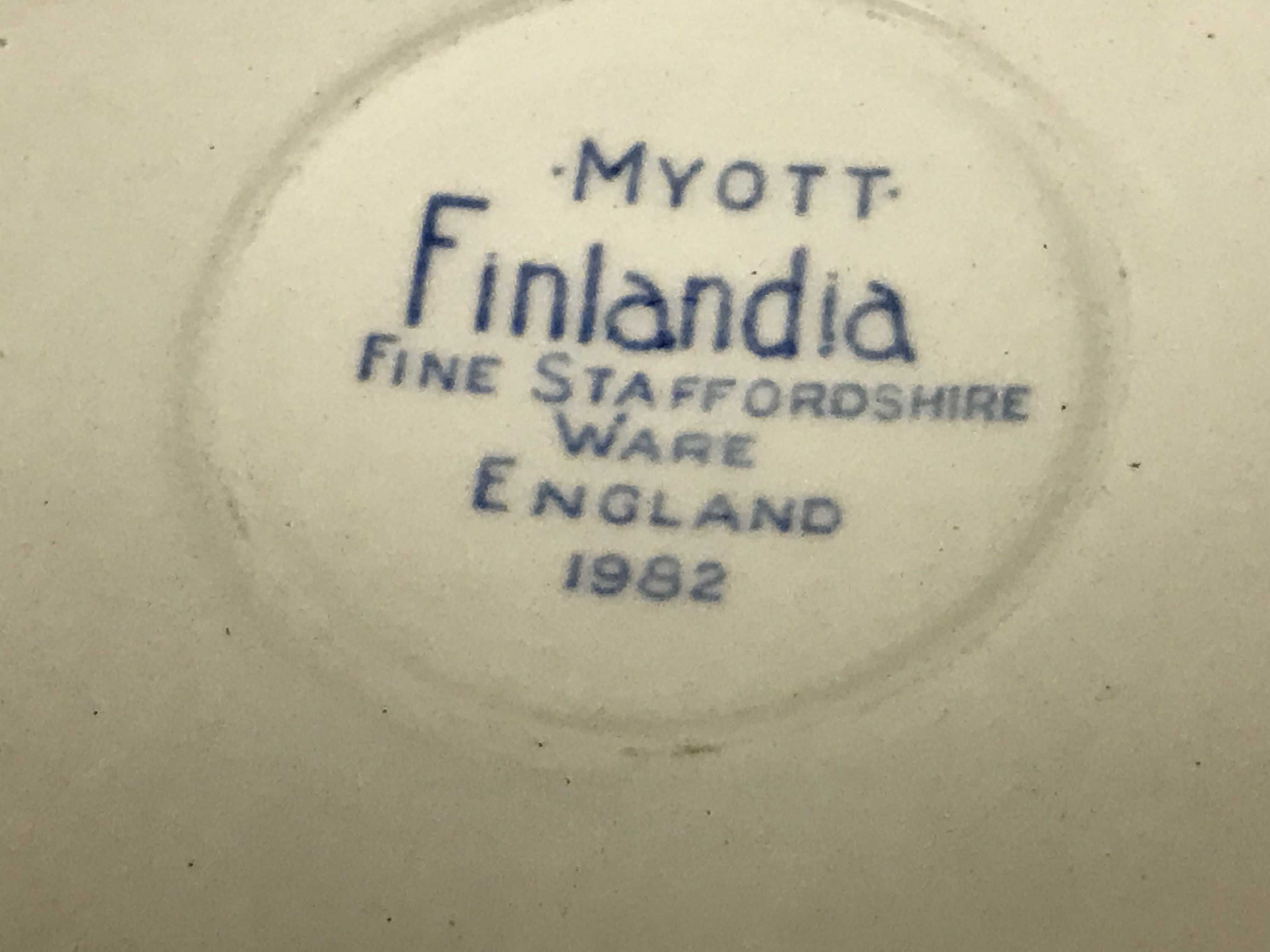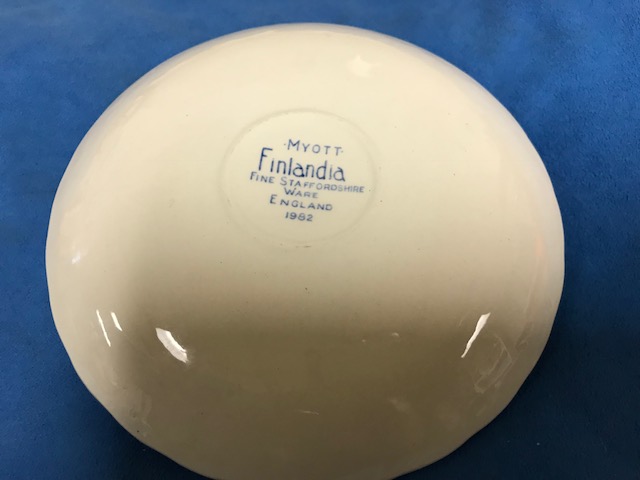Many assume “Made in England” is Lead-free. Nope! 1982 Myott Finlandia Pattern: 35,500 ppm Lead (90 is unsafe).
 Myott Finlandia 1982 Fine Staffordshire Ware, Made in England.
Myott Finlandia 1982 Fine Staffordshire Ware, Made in England.
When tested with an XRF instrument the dish pictured here was positive for :ead at the following level:
- Lead (Pb): 35,500 +/- 1,100 ppm
- Note: this dish was “Non-Detect” (negative) for Mercury (Hg), Arsenic (As), and Cadmium (Cd.)
For context: the amount of lead that is considered toxic in a newly manufactured item intended for use by children (today, in 2019) is anything 90 ppm Lead (or higher ) in the glaze, paint or coating.
Dishware is not considered to be “an item intended for use by children” and, as such, even new dishware is not as strictly regulated as toys. Additionally, depending on the year of manufacture, most vintage or antique dishware was simply not regulated at all for total Lead content (as detectible with a modern XRF instrument) at the time of manufacture (even in England.) As a matter of fact if you have vintage English china it is most likely VERY high lead… and typically the fancier (more expensive / “higher quality”) the pieces the higher Lead they tend to be.
These dishes also are highly likely to present a Lead-leaching hazard (where the Lead in the finish can easily leach into the food being eaten off of the plate) given their age and Lead level. I would never personally eat of a dish like this or have something like this in my home.
Unfortunately the concern for high levels of Lead being in vintage china holds true consistently for English china manufactured as late as 2010.
To see more English china I have tested, click here. These are specifically dishes with “England” or “Made in England” stamped on the bottom of the dish.
To see more “Staffordshire” pieces I have tested, click here.
To see more Myott pieces I have tested, click here.
For #SaferChoices for dishes, check these out!
To see the Lead-free dishes that I use in my home with my family, please click this Amazon link.* [Note: you can often find these dishes at Target for a little bit less money!]
As always, thank you for reading and for sharing my posts.
Please let me know if you have any questions.
Tamara Rubin
#LeadSafeMama
*Amazon links are affiliate links. If you purchase something after clicking one of my links I may receive a small percentage of what you spend at no additional cost to you. Thank you for supporting my work in this way.

Never Miss an Important Article Again!
Join our Email List





Dear Tamara,
I accidentally came across your website because I was looking for a spare saucer for the Myott Finlandia 1982. I was offered the dishes about a year ago by an elderly lady from the village (she had received them in the 1980s as a gift for subscribing to a garden magazine) and I really love the design. I use them almost every day. From what I understand it is better not to use them any more. But I’m afraid I didn’t get why they put lead in the finish and what happens to my body if the lead from the dishes gets into it. Do you think they also used lead in German dishes and how can I find out about it?
Omg I am collecting this. Are you saying we can get lead poisoning when using these? Churchill made this I believe in 1992 forward. Are those full of lead as well?
Hi Belinda!
It depends on the frequency of use, lead levels of your specific dishes and condition of the dishes (and types of usage – like with hot or acidic foods.) I have worked with several families whose children were poisoned – with their dishware being the likely specific source of exposure.
Tamara
Oh gosh I have the same plate but I bought it recently from homegoods so definitely not antique. Do you think the 2018-2020 ones will have lead too? Thank you.
Hi Angie,
Newer Finlandia pattern china may be lead-free.
https://tamararubin.com/2017/11/johnson/
Tamara
Have you ever tested the Staffordshire Royal Mail pattern? I inherited my mother’s and we use them once a year on Thanksgiving. I’m scared now!!!
How can I test the plates that I am currently using?
Have been eating off of three styles of Finlandia for
many years…quite a shock to read your info.
Thank you for any help you can give.
Deborah
I just found a box with a couple dozen pieces, what should I do with them?
I have 3 boxes of the 1982 Myott Finlandia though they don’t say a date on them. I suspect that they were manufactured prior to 1982 but not sure how to confirm that. By what is said here they are now not useable for anything but display.
What is the best way to dispose of them, as they likely will leach into any landfill they get sent too. Not sure what to do, please advise.
Thanks for your input,
Robin Rosh